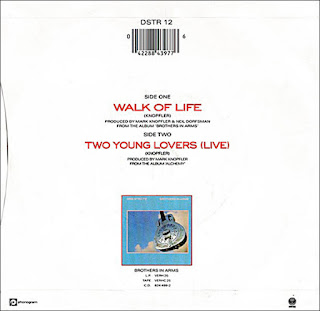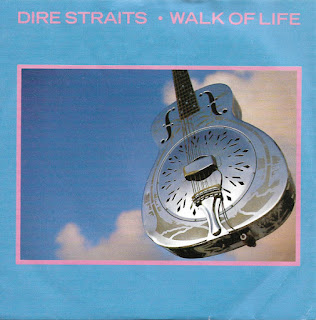THE CURE - CLOSE TO ME
Publicació: 13 de setembre de 1985
Llistes: Regne Unit: #24
"Close to Me" es va llançar originalment el setembre de 1985 com el segon single de l'àlbum "The Head on the Door". Va aconseguir un èxit moderat, arribant al número 24 de les llistes de singles del Regne Unit. El 1990, la banda va publicar un remix conegut com el "closet mix", que diferia significativament de la versió original i va tenir més èxit comercial, arribant al número 13 de les llistes.
El vídeo és una creació visualment impactant i imaginativa de Tim Pope, capturant l'essència del to divertit però melancòlic de la cançó. Aquí tens un resum dels elements clau i temes representats en el vídeo:
1. Ambientació i Concepte: El vídeo es desenvolupa dins d'un armari situat perillosament al vèrtex d'un penya-segat a Beachy Head. Aquest entorn representa metafòricament la precarietat i vulnerabilitat expressades en la lletra de la cançó.
2. Actuació de la Banda: Dins de l'armari, els membres del grup es representen en rols poc convencionals:
- Boris Williams aplaudeix el ritme.
- Lol Tolhurst toca un petit teclat de mà.
- Porl Thompson toca una pinta per imitar els sons aguts de la cançó.
- El baixista Simon Gallup, amb una bombeta a la boca per a un efecte il·luminat, sembla lligat.
- Robert Smith apareix i comença a cantar, manipulant titelles de dit que semblen nines vudú dels membres de la banda.
3. Acció i Drama: A mesura que avança la cançó, Robert Smith es torna cada cop més animat amb les titelles de dit, fent que els membres de la banda corresponents es moguin violentament dins de l'armari. Aquesta acció porta a moviments caòtics, amb l'armari que finalment cau pel penya-segat al mar.
4. Seqüència Sota l'Aigua: L'armari s'enfonsa al mar com un vaixell capgirat, omplint-se gradualment d'aigua. Malgrat això, els membres de la banda continuen tocant els seus instruments improvisats.
5. Toc Humorístic: El vídeo conclou amb un toc divertit mentre un ànec de goma és empès a través de la pantalla, afegint un element surrealista a la narrativa una mica fosca.
Robert Smith, reflexionant sobre "Close to Me" a la revista Q's 1001 Best Songs Ever, va revelar que inicialment no li semblava un dels millors èxits de The Cure. Durant la gravació, es va considerar una mica surrealista i ni tan sols es garantia un lloc a l'àlbum, però la pista va transformar-se quan Smith va millorar la interpretació vocal i la producció per crear una atmosfera profundament claustrofòbica. Smith també va destacar la influència del vídeo musical, notant la seva idea de filmar-lo dins d'un armari a dalt d'un penya-segat impulsat per un desig d'evocar incomoditat.
THE CURE - CLOSE TO ME
Released: September 13, 1985
Charted: UK: #24
Originally released in September 1985 as the second single from the album "The Head on the Door," "Close to Me" achieved moderate success, reaching number 24 on the UK Singles Chart. In 1990, the band released a remix known as the "closet mix," which significantly differed from the original version. This remix proved to be more commercially successful, reaching number 13 on the UK Singles Chart.
The music video is a visually striking and imaginative creation by Tim Pope, capturing the essence of the song's playful yet melancholic tone. Here’s a summary of the key elements and themes depicted in the video:
1. Setting and Concept: The video takes place inside a wardrobe situated precariously on the edge of a cliff at Beachy Head. This setting metaphorically represents the precariousness and vulnerability expressed in the song’s lyrics.
2. Band Performance: Inside the wardrobe, the band members are portrayed in unconventional roles:
- Boris Williams claps to the beat.
- Lol Tolhurst plays a small handheld keyboard.
- Porl Thompson plucks a comb to mimic the high sounds of the song.
- Bassist Simon Gallup, with a light bulb in his mouth for an illuminated effect, appears tied up.
- Robert Smith appears and begins to sing, manipulating finger puppets resembling voodoo dolls of the band members.
3. Action and Drama: As the song progresses, Robert Smith becomes increasingly animated with the finger puppets, causing the corresponding band members to move violently within the wardrobe. This action leads to chaotic movements, with the wardrobe eventually tumbling off the cliff and into the sea.
4. Underwater Sequence: The wardrobe sinks into the sea like a capsized ship, gradually filling with water. Despite this, the band members continue to play their makeshift instruments.
5. Humorous Touch: The video concludes with a playful touch as a rubber duck is pushed across the screen, adding a whimsical element to the surreal and somewhat dark narrative.
Robert Smith, reflecting on "Close to Me" in Q Magazine's 1001 Best Songs Ever, revealed that initially, the song didn't stand out to him as one of The Cure's best. During recording, it was seen as somewhat surreal and wasn't even guaranteed a spot on the album, but the track transformed when Smith pushed the vocal delivery and production to create a deeply claustrophobic atmosphere. Smith also highlighted the music video's influence, noting his idea to film it inside a wardrobe atop a cliff. This unconventional setting, driven by a desire to evoke discomfort.











































